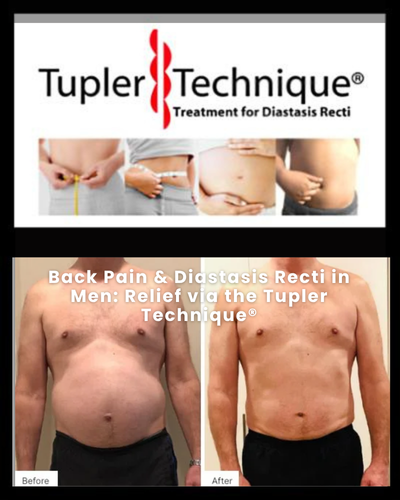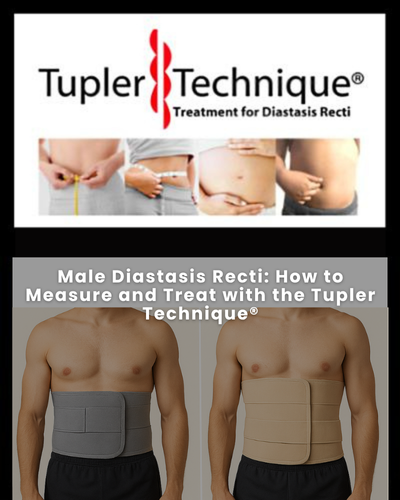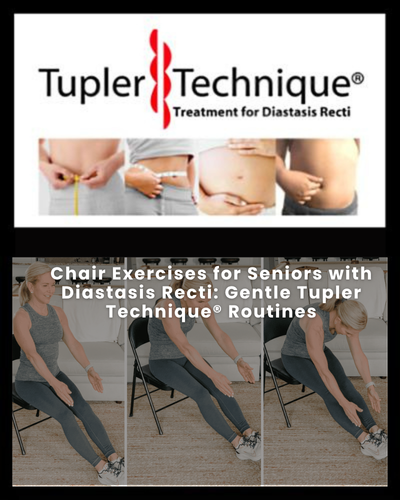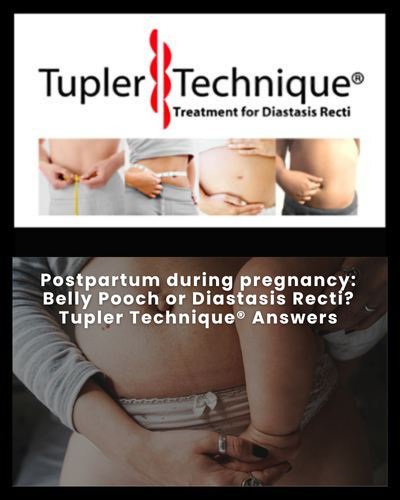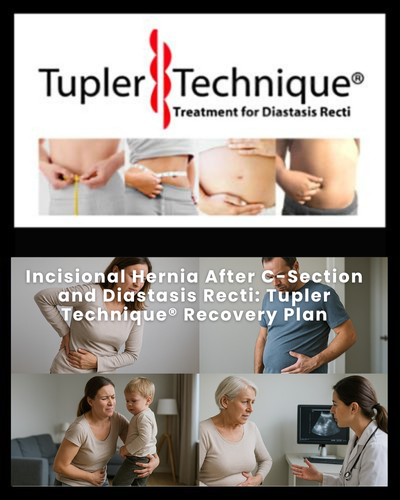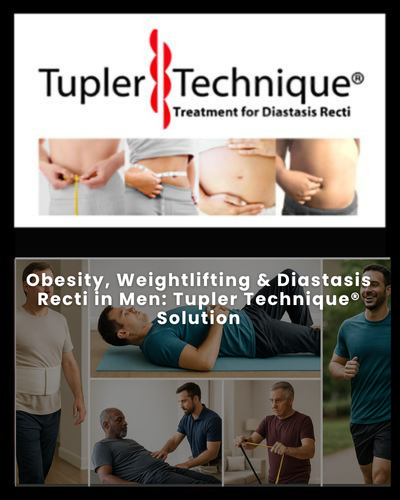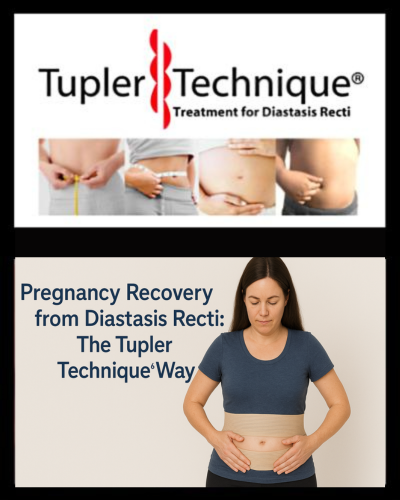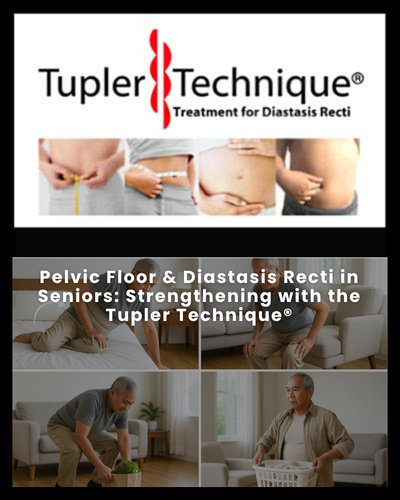Sometimes, when we’re met with the unfamiliar we don’t really know how to handle it or we just don’t know where to start.
If you’ve recently just heard about diastasis recti abdominis (DRA) and abdominal separation and you’re not sure what it is – or even if you have it, I’ve narrowed down the top 5 questions my clients always ask me about diastasis recti and what you need to know all in one article.
I am going to help you discover five (5) critical facts about diastasis recti or abdominal separation:
First, why does diastasis recti happen?
Second, can anyone get diastasis recti?
Third, how can I really check if I have it?
Fourth, do I have to undergo treatment or does it just go away?
And fifth, what are the effective treatments?
First off, how does diastasis recti happen?
Before we get into diastasis recti treatment, let’s first explore what diastasis recti or abdominal separation is and how it happens.
Diastasis Recti Abdominis (DRA)
The word diastasis itself means separation while recti is actually for the rectus muscles, the ones that belong to the outermost abdominal muscles. So it’s the separation of muscles or abdominal separation.
When this separation of the muscles from the linea alba, a connective layer that runs down the midline of the abdomen, occurs these muscles move sideways and the connective tissue stretches sideways.
These muscles function to support your back and organs, so when the muscles get separated, they won’t be able to do what they’re made to do.
And since it is now the weak and stretched out connective tissue ineffectively supporting your organs, this can make your belly look permanently bloated. Yes, that bulge in your belly may not just be because of too much beer or food intake.
This condition, also known as abdominal separation or abs separation is usually quite common among women after giving birth and it worsens with each pregnancy.
Can anyone get Diastasis Recti?
A lot of people have diastasis recti but just don’t know it because checking for a diastasis is unfortunately not part of any medical or fitness evaluation.
Diastasis Recti Happens to Women
Commonly, women who have been through childbirth are prone to diastasis recti due to their abdominal area being stretched. Research shows that 2 out of 3 pregnant and postpartum women suffer from diastasis recti or abdominal separation but taking into consideration my experience with working with thousands of pregnant women and new moms in my profession, I can say that it even reaches a very startling 98%.
But this doesn’t mean that only pregnant women can get diastasis recti.
First, here are the factors that can cause diastasis recti:
1. Rapid changes in weight in the abdominal area
2. Improper exercise (especially crunches and heavy
3. weightlifting)
4. Abdominal surgeries that inject air into the belly
5. Force from car accidents
6. Constipation
7. Pushing in labor
All of those enumerated above can’t only be exclusive to pregnant women alone since this can apply to almost everyone. So yes, men and even little children can also show signs of this condition.
Diastasis Recti Can Also Happen Among Men
DRA or abdominal separation may seem like something that only happens to women post-pregnancy but it can happen to men as well. That’s right, the “mummy tummy” can happen to men too. I call it the guy gut.
The top candidates for people who are at risk are athletes and male bodybuilders.
They are more prone to getting diastasis recti because of improper training relative to the abdominal muscles especially when it comes to sit-ups, crunches, push-ups, and front planks. Holding their breath while weight training can also cause undue stress to the abdominal wall which also contributes to abdominal separation.
Aside from exercise and bodybuilding, there are a few more factors that can lead to diastasis recti, which I further talked about on another article.
Read about diastasis recti in men to know more.
Diastasis Recti Can Happen to Children
All babies are born with their muscles separated, which means that it’s quite normal for them to have diastasis recti or abdominal separation in their early stages of development and usually, as the nervous system matures, the muscles come closer together around three years old.
However, in many children, the muscles remain apart and it’s a bit alarming that there isn’t much information on children with diastasis recti.
Luckily, I’ve realized this need for abdominal separation treatment in children and I have already come up with a diastasis recti treatment program for children and a video called Belly Button Boogie.
How do you know if you have it?
If you’ve ever felt symptoms such as physical discomfort in the abdominal area, back and hip pain, an outie belly button, constipation and bloating after eating, pelvic floor dysfunction, urine leakage, , then you might have diastasis recti.
One way to check if you do have diastasis recti is when your belly has a vertical bulge or a dome-shaped or half football bulge appearance when you lift your shoulders off the floor from a back lying position. It’s pretty distinct and would stick out, unlike a regular “tummy pooch.”
Pretty much anything can be linked to these symptoms so, how can you know for sure?
There is an easy enough procedure that you can do at home to self-check for any signs of diastasis recti.
All you have to do is:
First, lie on your back with your knees bent and your feet on the floor.
Second, placing the fingers on one hand on your belly over your belly button, relax your muscles and then slightly elevate your head into a mini-crunch position.
Third, you need to determine how many finger fit in the gully between the separated muscles.
An abdominal gap of three fingers or more between the rectus muscles is the appropriate measurement for the right diagnosis of diastasis recti.
It’s much easier to view a video than to read instructions. I recommend that you watch an instructional video where I demonstrate the actual process, which you can check out here.
If you had a difficult time coming up with an accurate reading, there is a more convenient and reliable alternative. My Diastometer™ is a device you can use to check if you have diastasis recti or abdominal separation. It helps you determine the distance between the separated muscles and the condition of the connective tissue.
Its purpose is to provide a standardized method of measurement for checking diastasis recti in centimeters, seeing that we all have different finger sizes and it may result in an incorrect reading.
You can use the diastometer™ to check yourself or be checked by a professional. To know more, I’ve talked about this in a video, covering the basics such as its use and how to use it.
After following this simple procedure or using the diastometer™, and you find out that you have this condition, its best if you seek for help here at diastasisrehab. Here, we care about Every Belly and have focused years of research and attention to one of the first and proven diastasis recti treatments, the Tupler Technique®.
Do I have to treat Diastasis Recti or does it just go away? (Can it cause other Problems?)
I’ve read a lot of articles and opinions dismissing diastasis recti as a mere cosmetic problem rather than a condition that affects your health and body pain. It being just a “cosmetic problem,” women are told to have surgery for it and men are told to just live with it.
But letting it be doesn’t mean that diastasis recti heals on its own (despite what some people believe) and it doesn’t make your pain get any lesser. As a matter of fact it does get worse with age.
Listen to what your body is telling you! Only you and you alone can know for sure what you’re feeling and the extent of pain that you’re experiencing!
In my experience of checking women during and after pregnancy for over 25 years, I have never seen it close on its own.
For women, after your first birth, it may come together a little but not close. So, then you would be starting a pregnancy with the diastasis. With each pregnancy, you will show faster, and it will get larger.
According to Gary Breslow, MD in his article on diastasis recti, seeking early treatment for diastasis recti is important for two (2) important reasons:
First, abdominal strength is the key to a safe birth, so if you plan on having more kids, it’s certainly not something you’ll want to overlook.
Second, a weak core caused by a separation in the rectus abdominis muscles can also affect your ability to perform routine, daily tasks and more strenuous physical activities.
That is why it is important to do the Tupler Technique® Program. Closing a diastasis is all about healing the connective tissue. To heal the connective tissue, you have to put both the muscles and connective tissue closer together, protecting it from getting stretched and in turn, making it stronger with the abdominal exercises.
It’s best to give yourself the proper treatment for your diastasis recti to lessen the inconveniences and pain that it brings as well as the possible complications that may arise, especially in childbirth.
What are the effective treatments for Diastasis Recti?
Yes, there are other ways you can “heal” your diastasis recti, and it can be through surgery or tummy tuck however it is important to note that this is only reserved for severe cases and it is not a guaranteed 100 percent cure! There is a tendency for the stitches to come undone and then separate again, so why not go for a sure and long lasting treatment such as the Tupler Technique®?
Surgery and tummy tucks are both treatments that you can undergo, but it is safe to assume that it’s the costlier way of treatment and not to mention that it doesn’t necessarily heal up your diastasis entirely.
Diastasis recti is not just a cosmetic issue, likewise it shouldn’t be handled as such. Proper exercise and strengthening of the core is more important than just losing that bulge in your stomach – but we can all agree that it’s also a plus to be able to go back to the flat belly you had before!
Aside from surgery, there are also a lot of core strengthening exercises to counter diastasis recti that you can just look up online and do at home.
Various self-treatment options already exist,but bear in mind that certain physical activities that you think can help you reduce your stomach bulge can actually make things worse.
So, it’s best to consult an actual professional and find a tried and tested program that can help you to unknowingly avoid making it worse.
The Tupler Technique® is an evidenced and research-based program in the field of diastasis recti treatment because not much attention is put into diastasis recti as more than just a cosmetic issue.
And just wearing the Diastasis Rehab Splint® isn’t nearly enough to close a diastasis,. That is just one of the steps of the program. It’s better to follow all four steps of the Tupler Technique® program.
To give you a short overview, the Tupler Technique® Program progresses over 18 weeks, and aims to heal the connective tissue in three ways:
First, by continuously bringing both the connective tissues and muscles together with the help of a splint that I designed especially for diastasis rehab.
Second, by preventing and protecting your connective tissue from getting stretched.
Third, by developing awareness and strength of the abdominal muscles with the Tupler Technique® exercises so your transverse muscle can then be used for the more physical activities and work outs.
Just like with all medical conditions, diastasis recti treatments don’t guarantee instant results – however they do guarantee significant gradual improvements. So I always recommend to take your before belly photos from the front and the side to see how your belly changes.
Take note that how fast the Tupler Technique® takes effect greatly depends on how severe your diastasis is, which means that a more severe diastasis may take more time to heal.
But rest assured that in just six weeks of following the Tupler Technique®, you can notice and feel improvements in the healing of your connective tissue. It can even make your diastasis smaller by up to 55%!
Diastasis recti can affect just about anybody, so if you think you have it and your body is telling you – listen to it! Diastasis recti pain is as real and as valid as any other type of condition.
To learn more about Diastasis Recti & the Tupler Technique® read this article: DIASTASIS RECTI RESEARCH AND EVIDENCED BASED EXERCISE PROGRAM
To view my women's programs click this link: WOMEN'S PROGRAM PACKAGES
Watch the short video below to know what a diastasis is.
recent articles
Sometimes, when we’re met with the unfamiliar we don’t really know how to handle it or we just don’t know where to start.
If you’ve recently just heard about diastasis recti abdominis (DRA) and abdominal separation and you’re not sure what it is – or even if you have it, I’ve narrowed down the top 5 questions my clients always ask me about diastasis recti and what you need to know all in one article.
I am going to help you discover five (5) critical facts about diastasis recti or abdominal separation:
First, why does diastasis recti happen?
Second, can anyone get diastasis recti?
Third, how can I really check if I have it?
Fourth, do I have to undergo treatment or does it just go away?
And fifth, what are the effective treatments?
First off, how does diastasis recti happen?
Before we get into diastasis recti treatment, let’s first explore what diastasis recti or abdominal separation is and how it happens.
Diastasis Recti Abdominis (DRA)
The word diastasis itself means separation while recti is actually for the rectus muscles, the ones that belong to the outermost abdominal muscles. So it’s the separation of muscles or abdominal separation.
When this separation of the muscles from the linea alba, a connective layer that runs down the midline of the abdomen, occurs these muscles move sideways and the connective tissue stretches sideways.
These muscles function to support your back and organs, so when the muscles get separated, they won’t be able to do what they’re made to do.
And since it is now the weak and stretched out connective tissue ineffectively supporting your organs, this can make your belly look permanently bloated. Yes, that bulge in your belly may not just be because of too much beer or food intake.
This condition, also known as abdominal separation or abs separation is usually quite common among women after giving birth and it worsens with each pregnancy.
Can anyone get Diastasis Recti?
A lot of people have diastasis recti but just don’t know it because checking for a diastasis is unfortunately not part of any medical or fitness evaluation.
Diastasis Recti Happens to Women
Commonly, women who have been through childbirth are prone to diastasis recti due to their abdominal area being stretched. Research shows that 2 out of 3 pregnant and postpartum women suffer from diastasis recti or abdominal separation but taking into consideration my experience with working with thousands of pregnant women and new moms in my profession, I can say that it even reaches a very startling 98%.
But this doesn’t mean that only pregnant women can get diastasis recti.
First, here are the factors that can cause diastasis recti:
1. Rapid changes in weight in the abdominal area
2. Improper exercise (especially crunches and heavy
3. weightlifting)
4. Abdominal surgeries that inject air into the belly
5. Force from car accidents
6. Constipation
7. Pushing in labor
All of those enumerated above can’t only be exclusive to pregnant women alone since this can apply to almost everyone. So yes, men and even little children can also show signs of this condition.
Diastasis Recti Can Also Happen Among Men
DRA or abdominal separation may seem like something that only happens to women post-pregnancy but it can happen to men as well. That’s right, the “mummy tummy” can happen to men too. I call it the guy gut.
The top candidates for people who are at risk are athletes and male bodybuilders.
They are more prone to getting diastasis recti because of improper training relative to the abdominal muscles especially when it comes to sit-ups, crunches, push-ups, and front planks. Holding their breath while weight training can also cause undue stress to the abdominal wall which also contributes to abdominal separation.
Aside from exercise and bodybuilding, there are a few more factors that can lead to diastasis recti, which I further talked about on another article.
Read about diastasis recti in men to know more.
Diastasis Recti Can Happen to Children
All babies are born with their muscles separated, which means that it’s quite normal for them to have diastasis recti or abdominal separation in their early stages of development and usually, as the nervous system matures, the muscles come closer together around three years old.
However, in many children, the muscles remain apart and it’s a bit alarming that there isn’t much information on children with diastasis recti.
Luckily, I’ve realized this need for abdominal separation treatment in children and I have already come up with a diastasis recti treatment program for children and a video called Belly Button Boogie.
How do you know if you have it?
If you’ve ever felt symptoms such as physical discomfort in the abdominal area, back and hip pain, an outie belly button, constipation and bloating after eating, pelvic floor dysfunction, urine leakage, , then you might have diastasis recti.
One way to check if you do have diastasis recti is when your belly has a vertical bulge or a dome-shaped or half football bulge appearance when you lift your shoulders off the floor from a back lying position. It’s pretty distinct and would stick out, unlike a regular “tummy pooch.”
Pretty much anything can be linked to these symptoms so, how can you know for sure?
There is an easy enough procedure that you can do at home to self-check for any signs of diastasis recti.
All you have to do is:
First, lie on your back with your knees bent and your feet on the floor.
Second, placing the fingers on one hand on your belly over your belly button, relax your muscles and then slightly elevate your head into a mini-crunch position.
Third, you need to determine how many finger fit in the gully between the separated muscles.
An abdominal gap of three fingers or more between the rectus muscles is the appropriate measurement for the right diagnosis of diastasis recti.
It’s much easier to view a video than to read instructions. I recommend that you watch an instructional video where I demonstrate the actual process, which you can check out here.
If you had a difficult time coming up with an accurate reading, there is a more convenient and reliable alternative. My Diastometer™ is a device you can use to check if you have diastasis recti or abdominal separation. It helps you determine the distance between the separated muscles and the condition of the connective tissue.
Its purpose is to provide a standardized method of measurement for checking diastasis recti in centimeters, seeing that we all have different finger sizes and it may result in an incorrect reading.
You can use the diastometer™ to check yourself or be checked by a professional. To know more, I’ve talked about this in a video, covering the basics such as its use and how to use it.
After following this simple procedure or using the diastometer™, and you find out that you have this condition, its best if you seek for help here at diastasisrehab. Here, we care about Every Belly and have focused years of research and attention to one of the first and proven diastasis recti treatments, the Tupler Technique®.
Do I have to treat Diastasis Recti or does it just go away? (Can it cause other Problems?)
I’ve read a lot of articles and opinions dismissing diastasis recti as a mere cosmetic problem rather than a condition that affects your health and body pain. It being just a “cosmetic problem,” women are told to have surgery for it and men are told to just live with it.
But letting it be doesn’t mean that diastasis recti heals on its own (despite what some people believe) and it doesn’t make your pain get any lesser. As a matter of fact it does get worse with age.
Listen to what your body is telling you! Only you and you alone can know for sure what you’re feeling and the extent of pain that you’re experiencing!
In my experience of checking women during and after pregnancy for over 25 years, I have never seen it close on its own.
For women, after your first birth, it may come together a little but not close. So, then you would be starting a pregnancy with the diastasis. With each pregnancy, you will show faster, and it will get larger.
According to Gary Breslow, MD in his article on diastasis recti, seeking early treatment for diastasis recti is important for two (2) important reasons:
First, abdominal strength is the key to a safe birth, so if you plan on having more kids, it’s certainly not something you’ll want to overlook.
Second, a weak core caused by a separation in the rectus abdominis muscles can also affect your ability to perform routine, daily tasks and more strenuous physical activities.
That is why it is important to do the Tupler Technique® Program. Closing a diastasis is all about healing the connective tissue. To heal the connective tissue, you have to put both the muscles and connective tissue closer together, protecting it from getting stretched and in turn, making it stronger with the abdominal exercises.
It’s best to give yourself the proper treatment for your diastasis recti to lessen the inconveniences and pain that it brings as well as the possible complications that may arise, especially in childbirth.
What are the effective treatments for Diastasis Recti?
Yes, there are other ways you can “heal” your diastasis recti, and it can be through surgery or tummy tuck however it is important to note that this is only reserved for severe cases and it is not a guaranteed 100 percent cure! There is a tendency for the stitches to come undone and then separate again, so why not go for a sure and long lasting treatment such as the Tupler Technique®?
Surgery and tummy tucks are both treatments that you can undergo, but it is safe to assume that it’s the costlier way of treatment and not to mention that it doesn’t necessarily heal up your diastasis entirely.
Diastasis recti is not just a cosmetic issue, likewise it shouldn’t be handled as such. Proper exercise and strengthening of the core is more important than just losing that bulge in your stomach – but we can all agree that it’s also a plus to be able to go back to the flat belly you had before!
Aside from surgery, there are also a lot of core strengthening exercises to counter diastasis recti that you can just look up online and do at home.
Various self-treatment options already exist,but bear in mind that certain physical activities that you think can help you reduce your stomach bulge can actually make things worse.
So, it’s best to consult an actual professional and find a tried and tested program that can help you to unknowingly avoid making it worse.
The Tupler Technique® is an evidenced and research-based program in the field of diastasis recti treatment because not much attention is put into diastasis recti as more than just a cosmetic issue.
And just wearing the Diastasis Rehab Splint® isn’t nearly enough to close a diastasis,. That is just one of the steps of the program. It’s better to follow all four steps of the Tupler Technique® program.
To give you a short overview, the Tupler Technique® Program progresses over 18 weeks, and aims to heal the connective tissue in three ways:
First, by continuously bringing both the connective tissues and muscles together with the help of a splint that I designed especially for diastasis rehab.
Second, by preventing and protecting your connective tissue from getting stretched.
Third, by developing awareness and strength of the abdominal muscles with the Tupler Technique® exercises so your transverse muscle can then be used for the more physical activities and work outs.
Just like with all medical conditions, diastasis recti treatments don’t guarantee instant results – however they do guarantee significant gradual improvements. So I always recommend to take your before belly photos from the front and the side to see how your belly changes.
Take note that how fast the Tupler Technique® takes effect greatly depends on how severe your diastasis is, which means that a more severe diastasis may take more time to heal.
But rest assured that in just six weeks of following the Tupler Technique®, you can notice and feel improvements in the healing of your connective tissue. It can even make your diastasis smaller by up to 55%!
Diastasis recti can affect just about anybody, so if you think you have it and your body is telling you – listen to it! Diastasis recti pain is as real and as valid as any other type of condition.
To learn more about Diastasis Recti & the Tupler Technique® read this article: DIASTASIS RECTI RESEARCH AND EVIDENCED BASED EXERCISE PROGRAM
To view my women's programs click this link: WOMEN'S PROGRAM PACKAGES
Watch the short video below to know what a diastasis is.








